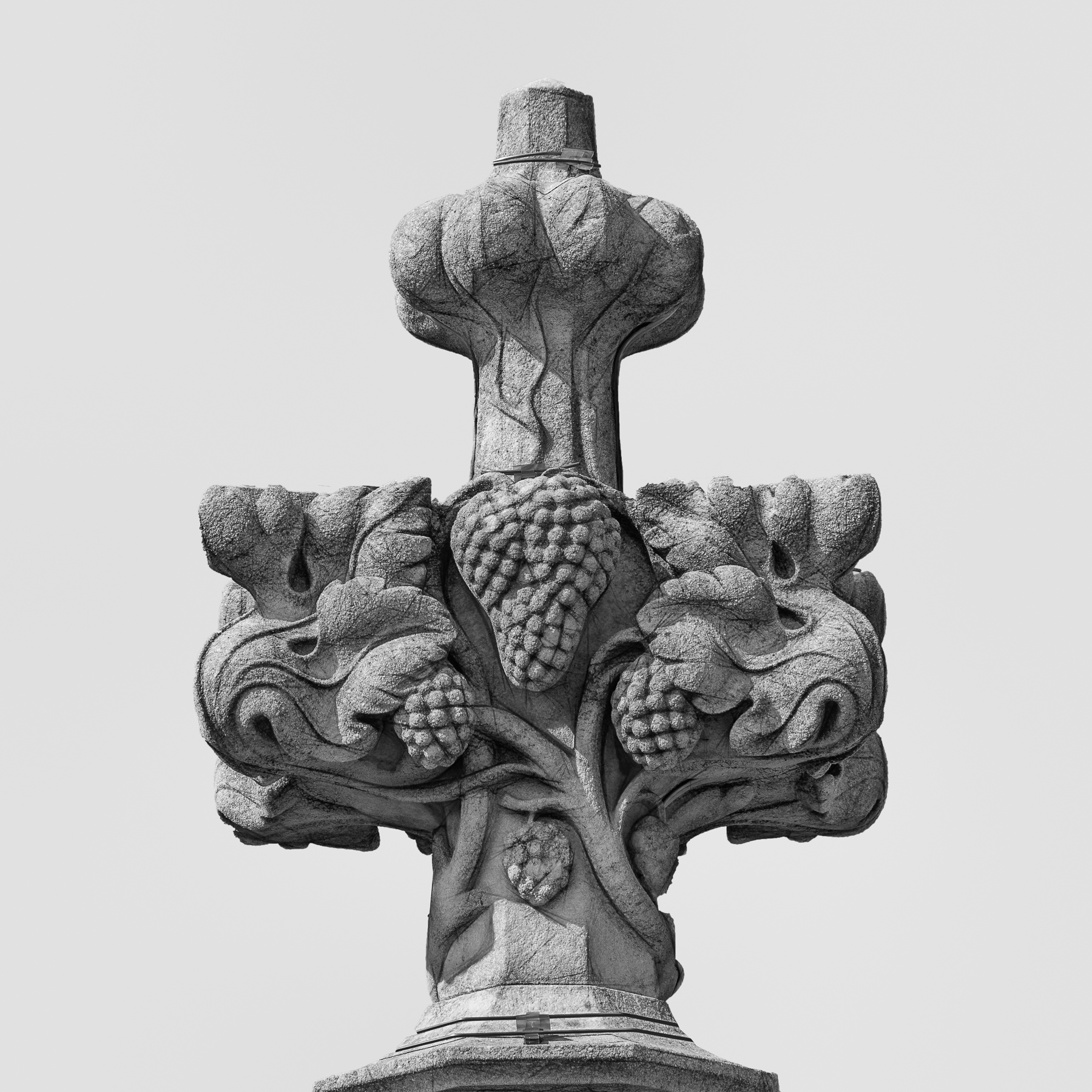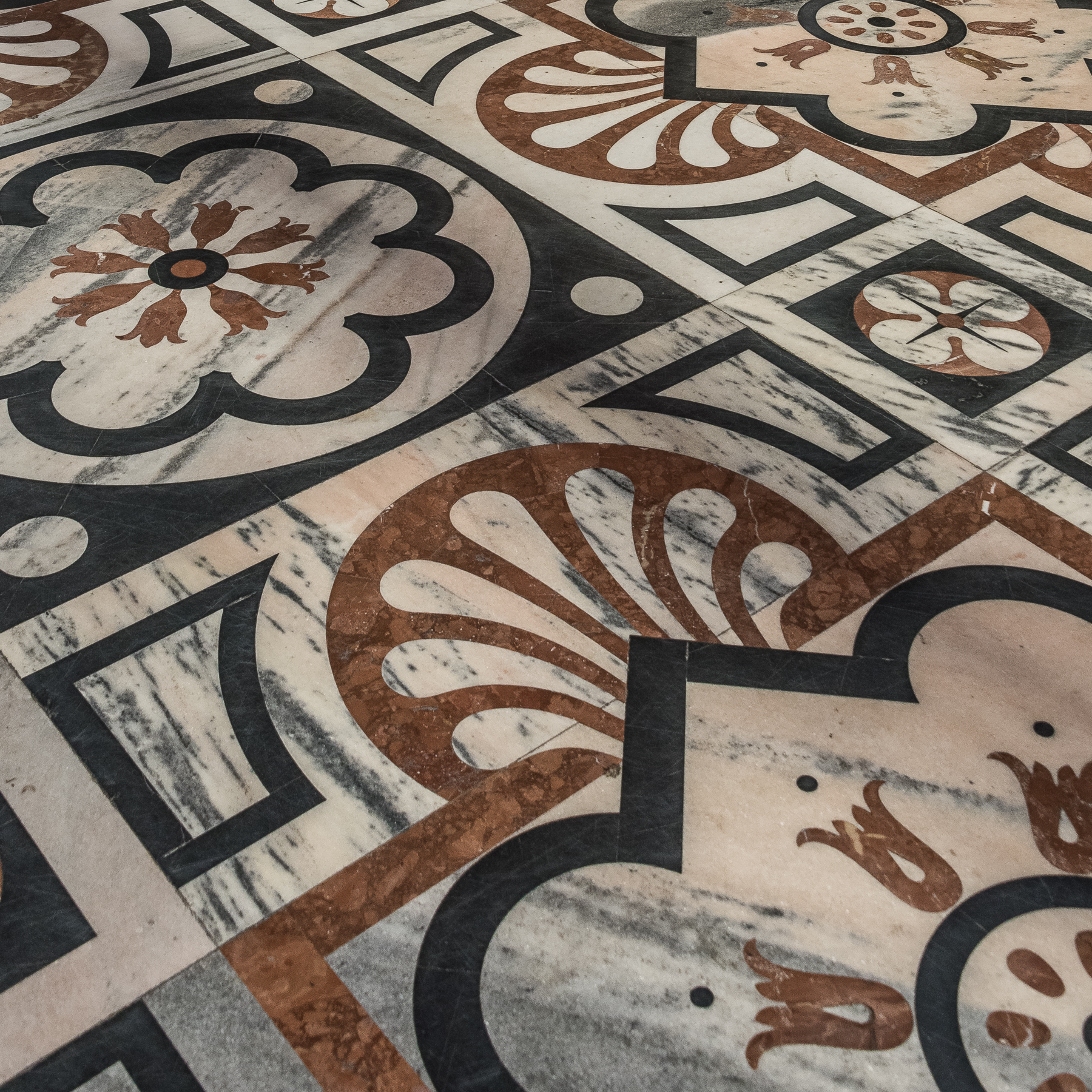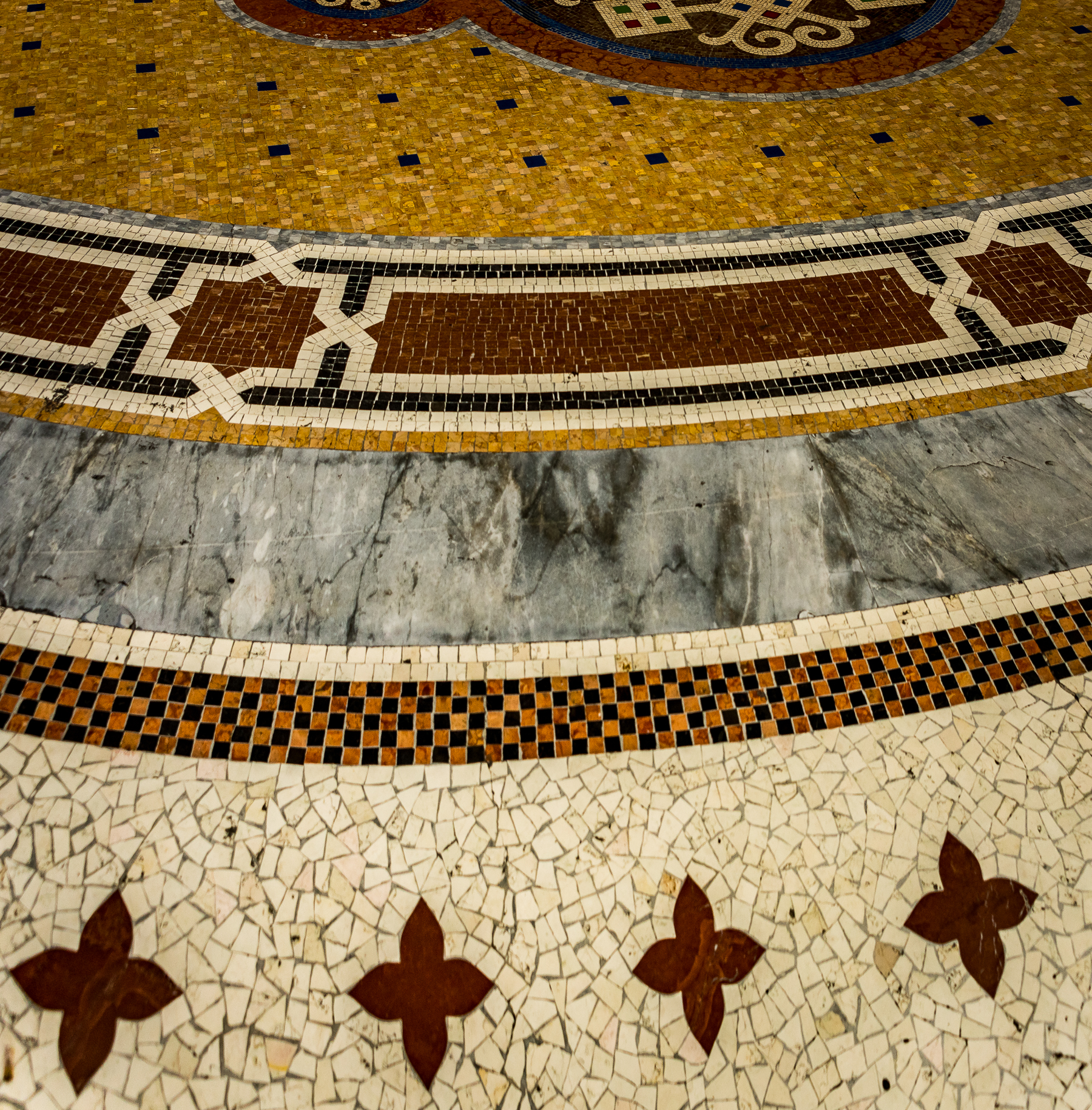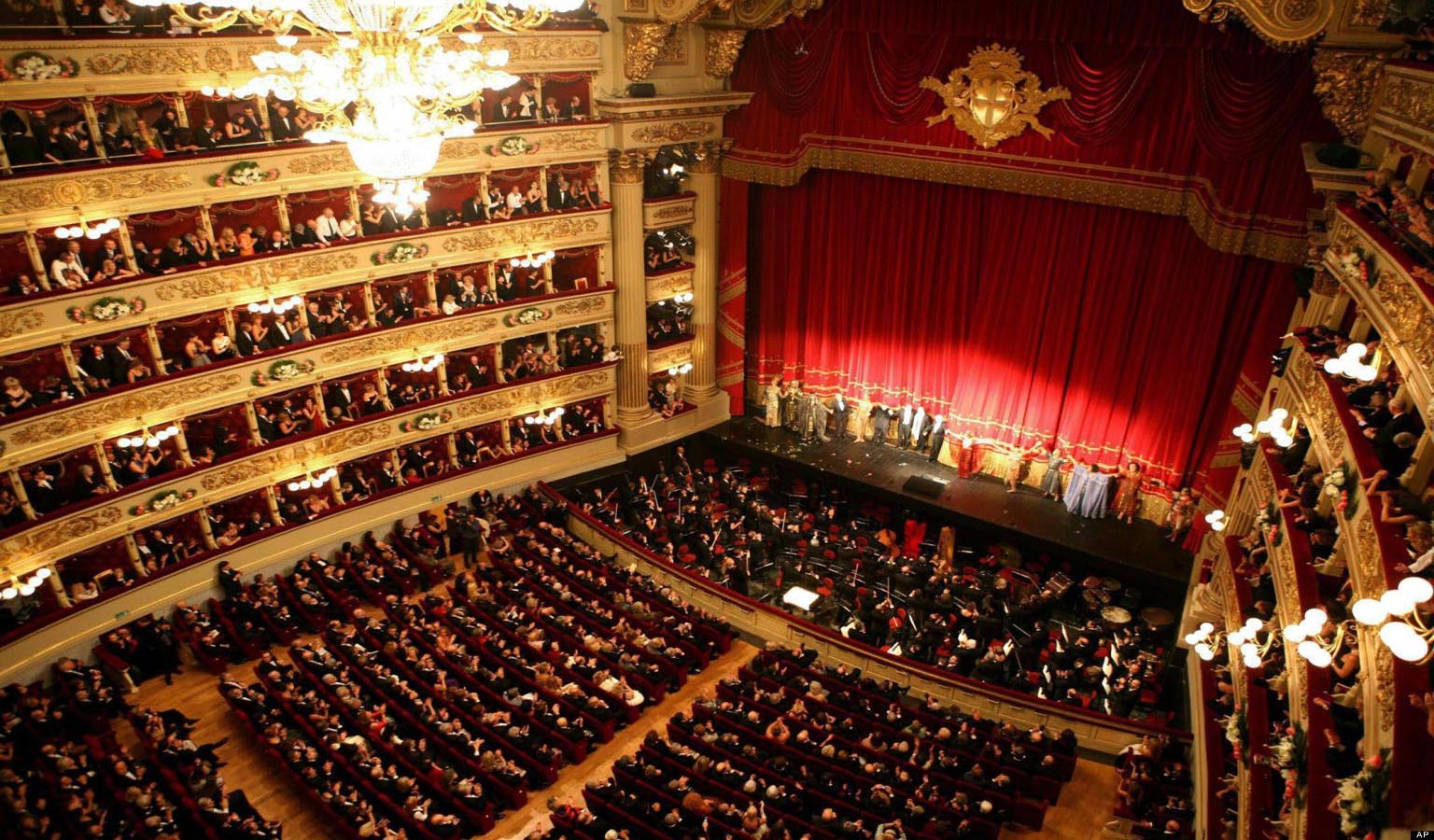[NOTE: If you don’t envision ever traveling to Milano for a bit of sightseeing, you might want to skip this rather wordy article…but at least take a look at the photos to see if your interest might be peeked]
“This article focuses on the cultural side of Italy, usually found while you are in one of the larger cities. The question I put before you is, ‘Should you spend a significant amount of your precious time in Milano?’ ”
OK, you are planning a trip to Italy. You will have limited time, and you want to make the most of that time whilst there. Generally, there are two potential primary venues for your trip’s focus. Perhaps you want a cultural experience -- one where you find yourself in the larger, history-laden Italian cities, with a focus on art museums and churches. Or, maybe you will be focusing on the Italian countryside experience -- its people, land, wine and food. More than likely, you will be shooting for a bit of both of these venues.
This article focuses on the cultural side of Italy, usually found while you are in one of the larger cities. The question I put before you is, “Should you spend a significant amount of your precious time in Milano?” Here is my opinion.
An Italian city’s cultural draw is not defined by its population. For instance, Rome is the largest city at 2.3-million people, and has a huge cultural footprint (more below). But Florence, Italy’s 8th-largest city, has only 350,000, and also super-cultural. And then there’s little Venice, which is chock-a-block full of culture, but is the 110th-largest city, and tips in at only 50,000 Venetians!
Of course there are undeniably many other cities of culture in Italy, like Verona, Palermo, Turin, Bologna, Naples and others; but, I am confident that the three cities of Rome, Florence and Venice make up the Big-3 for those seeking overall cultural satisfaction. And, if you go to the website of a city-aggregating travel agency, you will find, front-and-center, itineraries for Rome-Florence-Italy, complete with connecting first-class trains.
Now, let’s add Milano to the list of biggest cities, as it is indeed Italy’s second largest city – tipping in at about 1.2-million inhabitants. So, it’s a big city. But, does that mean it’s worth a significant amount of your sightseeing time if you are seeking the most interesting cultural sights?
I have spent time in Rome, Milano, Florence and Venice seeking my own Italian-cultural awakening. Though Rome is a good bit larger, it has a charm that is missing in Milano. Consider Rome’s centro storico, or historical center. It is about 5 square miles and holds most all of what you would think about when you think of Rome – that would be the Vatican, with its museums, Sistine Chapel and St Peter’s, the Spanish Steps, Forum, Colosseum, catacombs, Trevi fountain, Piazza Colonna, Pantheon, Campo de Fiori, Piazza Navona, Villa Borghese, Piazza Venezia, Trastevere, a whole bunch of beautiful churches, and many, many museums – pretty much everything you would want to see if visiting the whole of Rome…and it’s all right there in one central location.
Then there is Florence. It is considered to be one of the most walkable cities in the world, and at its fabulous centro storico, you find almost all it has to offer in less than a 1/3-square-mile area. In that area is the: Duomo with climbable dome and Baptistery; Accademia where David stands tall; storied Uffizi Gallery with over 100 rooms and a 5-hour wait in the summer; Ponte Vecchio, intentionally left undamaged by the Germans in WW2; Piazza delle Signora; Basilica Santa Croce, housing Gallileo’s tomb, among others; Santa Maria del Fiore; Pallazo Pitti; Boboli Gardens; Basilica of Santa Maria Novella; all of the Medici lore and properties; etc.
And then there’s Venice. It’s unique in that the centro storico is pretty much the whole lagoon island of Venice proper, with its six sestiere making up an area about 1.25 miles square. Add in the charming and historical parts of the Giudeca, the island of Murano, as well as the island of Burano. The whole place is full of historical charm, art, architecture, etc. Almost by definition, it’s a floating museum that is assuredly impossible to understand until you’ve been there.
And now to Milano. Milano, in my humble opinion, has a centro storico of about 5 square blocks, not miles. That area contains the Duomo with its piazza, Galleria Vittorio Emanuele II, and La Scala. To be sure, there are museums like the Sforza Castle, monuments and piazzas galore in Milano. But they are spread out over an area of less-than-charming commercial/residential neighborhoods with their maze of crowded streets. And of course there’s Piazza di Santa Maria delle Grazie, where Da Vinci’s ‘Last Supper’ masterpiece can be found, which is about a not-in-anyway-charming mile from the centro storico.
I’m not trying to beat up on Milano, but as a tourist with limited time to spend in Italy, there is much more to see of historical interest in Rome and, of course, Venice, and then of course, Florence. If you want to see the sights of Milan, I would say that you can do it easily in a day…I’ve done it twice…once on a 3-hour train layover and more recently in about a 5 hour visit.
But don’t let me denigrate the cultural features within Milano’s centro storico, because they do have some magnificent features, though they be few.
The Duomo of Milano
First, is the Duomo. This basilica has the most fascinating façade of any you will find in Italy, or anywhere else for that matter. To be exact, there are 3,400 statues, 135 gargoyles and 700 other figures that decorate the exterior of the Duomo of Milano!
It is the largest church in Italy (remember that St. Peter's Basilica is in the ‘country’ of Vatican City), the third largest in Europe and the fourth largest in the world.
What we find so interesting is that you are encouraged to walk around on the roof. It is such a treat to be way up there among all of those carved features. The tricky walking ‘path’ is such that one would not be allowed this opportunity within the U.S. And everywhere you look, there seems to be a statue, either sitting atop a spire, or embedded within some other feature.
Did you know that Napoleon was crowned King if Italy at the Duomo in 1805? Well, he was – though ‘Italy’ was a rather loose term at the time, with the country of Italy being established in only 1861. And as the time for his coronation approached, he directed that the embellishments of the Duomo’s façade be quickly completed at the expense of France. Though the façade was completed, France never coughed up the funds. Maybe the check got lost in the mail?
Yes, the inside of the church is large, though a bit austere. Nothing like the embellishments of St Peter’s in Rome.
Galleria Vittorio Emanuele II
Now to the Galleria Vittorio Emanuele II, which is basically a shopping mall. But not just any mall. Built in the mid-1860s, it has a four-story double arcade (like a plus sign), all covered with glass, and with a central glass dome.
The ends of each of the four entrances are open, so a nice breeze passes through. It’s named after the first king of the true Kingdom of Italy, Vittorio Emanuele II.
Note the statues adorning the walls of the fourth floor…you can see them in the previous photo, also…and each is different
The floors are covered in mosaic-patterned marble and all-in-all, it is a very impressive sight. Especially considering when it was designed and constructed…about the time of our U.S. Civil War.
Of course, Milano is the fashion capital of Italy, and the Galleria has it all.
I was fortunate to join a supermodel photo shoot as they were strutting their stuff in the Galleria.
La Scala Opera
If you are an opera fan, you probably dream of attending one of your favorites at the La Scala opera house. It was originally known as the Nuovo Regio Ducale Teatro alla Scala (New Royal-Ducal Theatre at the Scala).
It’s called the ‘new’ theater because the original one burned down in 1776, about the time our forefathers were signing the Declaration of Independence. At the site of the new opera house was the church of Santa Maria alla Scala (that would be St Mary of the Ladder, by the way…go figure), which was de-consecrated and torn down to make way for the now-famous La Scala.
Whatever you might call it, call the inside of La Scala beautiful.
But in spite of its beauty, the opera fans can get quite rowdy…it they don’t like a singer, they will let it be known. You’re going to love what happened during the 2006 season opener. When his rendition of the duet aria Celeste Aida was greeted by boos and whistles, Roberto Alagna, a world-renowned tenor, stopped singing and walked off, leaving his startled partner in the duet stranded on stage. The understudy Antonello Palombi was literally thrown onto the stage a few moments later, dressed in jeans rather than a costume. In case you are wondering, Antonello did well. I don’t know about you, but I would have loved to have been there to see that!
Leonardo De Vinci’s Last Supper
About a mile outside of the centro storico you will find Leonardo Da Vinci’s ‘Last Supper’. It is located next to the church of Santa Maria delle Grazie in an unassuming museum called Cenacolo Vinciano.
You must get tickets in advance, and as they are quite popular and are released only two-months in advance, you’ve got to be prepared. Alternatively, various tour companies gather up bundles of tickets. We used GetYourGuide for ours. The folks in the photo at right-above don’t look very happy…they just walked a mile in the Milano heat along streets crowded with traffic to get to the second half of this ‘Best of Milan Tour’…we taxied.
The Last Supper is located at one end of a large, windowless room. We were captivated by the painting and its size…it’s really big at 15’ by 30’.
The friars did something really strange to the painting. The kitchen lay behind the wall of the painting (which didn’t help to create a humidity-controlled atmosphere), so they cut a hole in the wall, removing Christ’s feet, as well as those of some of His disciples. A couple of Da Vini’s assistants painted large canvases of his masterpiece, and these are well preserved today, giving us a much better idea of what the original work looked like. These paintings were used by the restorers to fill in missing information.
The Last Supper is not-quite-a-fresco. If it was a true fresco, it would be in much better shape. A fresco is painted on wet plaster and when it dries, the paint is embedded into the plaster. Da Vinci painted the Last Supper on already-dried plaster, which has led to a bit of peeling (actually, a lot of peeling) and several restorations over the years.
Here is what the painting looked like in 1975, before significant restoration at the turn of our century. We were pleased to see the current, restored version.
Turns out that Leonardo was a bit spirited. A prior from the monastery complained to Da Vinci about the amount of time it was taking him to finish the painting (from 1495 to 1498). Leonardo wrote to the abbot of the monastery, explaining he had been struggling to find the perfect villainous face for Judas’, and that if he could not find a face corresponding with what he had in mind, he would use the features of the prior who complained. Hah!
Here are the names of the apostles in the painting, from your left to right: Bartholomew, James the Minor, Andrew, Judas, Peter, John, Jesus, Thomas, James the Greater, Phillip, Matthew, Jude and Simon.
During WWII, the allies did a bit of bombing in our fight against the Germans. At least one bomb landed on the friary, but in anticipation of such an event, the painting was protected, as can be seen in this photo.
There is a wall-covering painting by Giovanni Donato called ‘Crucifixion’ at the other end of the room. This one is in better shape, as it is a true fresco, painted on wet plaster.
So, that’s about it for cultural interest, though as stated before, there are other museums scattered around Milano. If you find yourself in Milano by design or in a layover, by all means, take a few hours to see these fabulous sights. Otherwise, if you have one day in Italy to see historic sights, spend it in Rome, Venice or Florence, where each is full of fascinating things to see. Have two days? Then spend them in those same cities, as you can easily fill those two days in each. Do you have a week you want to dedicate to historical sights? Then divide your time among those cities. After you’ve satisfied yourself with what you’ve seen in Rome, Florence and Venice, then go spend a day in Milano.
How I Would See Cultural Milano
Here’s how I would see Milan: take a tour…one that includes the historical area around the Duomo, as well as Da Vinci’s ‘Last Supper’. You will find nice, live-guided, English-spoken tours by searching for (in no particular order) Veditalia, Viator, GetYuorGuide, Trip Advisor, and others. Or, if you are in the off-season when you don’t have to fight for entrance tickets (if that time actually exists!), see the sights on your own. Have a nice street-side trattoria lunch and a roof-top dinner. Then, as Milano is the transportation hub of Northern Italy, get up in the morning and head to points north (like the Lake District), points east (like Verona and Venice), points south (like Tuscany, Rome, Amalfi coast, and Sicily), or points west (like Piemonte and Cinque Terra). There is so much more to see and do in Italy than to wander the uninteresting and disagreeable, traffic-laden streets of Milano.
In closing, for me, whether to visit Milano depends on:
How much time you have to spend in Italy;
How much of that time you want to spend on historical art and architecture, versus Italy’s charming countryside; and
Whether you’ve already seen the cultural sights of the aforementioned cities.
By now, I think you probably get the point…at least I hope so.
And I’ll probably visit Milano again at some point. If you’re climbing those spiral, stone steps to the top of the Duomo, that’s probably me just ahead of you doing the huffing-and-puffing on the way up!
Ciao for now,
Steve



























